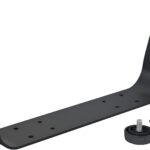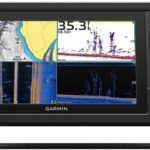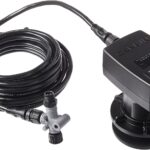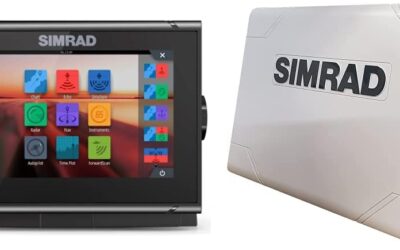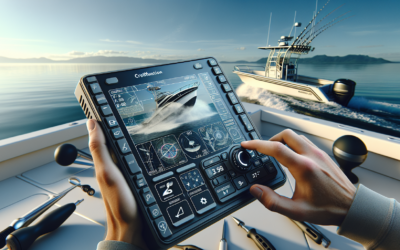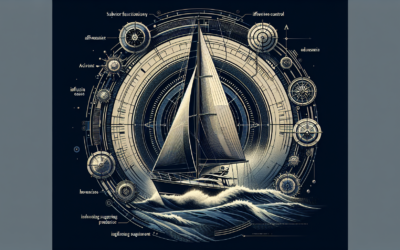Lucky for you, finding the perfect fish finder settings doesn’t have to be a daunting task anymore. In this article, we’ll walk you through the ins and outs of understanding frequencies and guide you on how to choose the right fish finder settings. Whether you’re a seasoned angler or just starting out, this comprehensive guide will help you optimize your fishing experience and increase your chances of reeling in the big catch. So, let’s dive right in and explore the world of frequencies to ensure you never miss a bite again!
Frequency Basics
What is frequency?
Frequency refers to the number of cycles per second that an electronic signal completes. In the context of fish finders, frequency is used to determine how many waves are emitted into the water. These waves bounce off objects and return to the fish finder, allowing it to create a detailed image of what is beneath the surface.
Why is frequency important in fish finders?
Frequency is an essential factor to consider when using fish finders because it directly impacts their ability to detect and display underwater objects. Different frequencies are better suited for certain water conditions and fishing scenarios. By understanding frequency options and their implications, you can make more informed decisions about which fish finder to use in various circumstances.
Fish Finder Frequency Options
Single frequency fish finders
Single frequency fish finders operate on a fixed frequency throughout the entire scanning process. They are often more affordable and simpler to use compared to other options. These fish finders work well in shallow water and are effective for identifying large structures and objects. However, they may struggle to provide detailed images or accurately distinguish between different types of fish.
Dual frequency fish finders
Dual frequency fish finders, also known as dual beam fish finders, offer the ability to toggle between two frequencies. The higher frequency provides greater clarity and detail for shallower waters, while the lower frequency is better suited for deeper water, as it can penetrate more effectively. This versatility makes dual frequency fish finders a popular choice among anglers.
Multiple frequency fish finders
Multiple frequency fish finders, also known as broadband or CHIRP fish finders, offer the most advanced technology in frequency selection. These fish finders emit a range of frequencies and can adjust their frequency in real-time, producing extremely detailed and accurate images. They are highly effective in various water conditions and can provide a superior fish-finding experience. However, multiple frequency fish finders are often more expensive and require a higher level of technical expertise to operate.
Factors to Consider When Choosing Frequency
Depth of water
The depth of the water you plan to fish in is a critical factor in determining the appropriate frequency for your fish finder. In general, higher frequencies work well in shallower water, while lower frequencies are better suited for deeper water. This is because higher frequencies can provide more detailed images in shallow water, while lower frequencies can penetrate more effectively in deeper water.
Type of fish
Different fish species may respond differently to sonar frequencies. Some species may be more easily detected and identified using specific frequencies. For example, smaller fish may require higher frequencies to be effectively located, whereas larger fish may be more easily detected with lower frequencies. Understanding the behavior and habits of the fish species you are targeting can help inform your frequency selection.
Water conditions
Water conditions, such as clarity and turbulence, can significantly affect the performance of different frequencies. Clear water allows for greater penetration of high frequencies, providing detailed imagery. On the other hand, murky or turbulent water may interfere with high-frequency signals, making lower frequencies more suitable for accurate fish finding.
Understanding Sonar
What is sonar?
Sonar, short for “sound navigation and ranging,” is a technique that uses sound waves to detect and locate objects underwater. In fish finders, sonar is used to emit sound waves into the water, which then bounce off objects and return to the device as echoes. By interpreting these echoes, fish finders can create visual representations of the underwater environment.
How does sonar work in fish finders?
Fish finders utilize transducers, which convert electrical signals into sound waves and vice versa. The transducer emits a series of sound waves, commonly referred to as pings, into the water. These waves travel through the water until they encounter an object, at which point they bounce back as echoes. The transducer then receives these echoes and translates them into useful information, such as the presence of fish or underwater structures.
Sonar Frequency and its Impact on Fish Finding
How does sonar frequency affect fish finding?
Sonar frequency plays a crucial role in determining the level of detail and accuracy in fish finding. Higher frequencies provide clearer and more precise images, making them ideal for identifying small objects and individual fish. On the other hand, lower frequencies can penetrate deeper into the water and are better suited for detecting larger structures and schools of fish.
Choosing the right sonar frequency
When selecting a sonar frequency, it’s important to consider the depth of the water and the type of fish you are targeting. In shallower water, higher frequencies are recommended for enhanced detail. For deeper water, lower frequencies are more appropriate for better penetration. It may also be beneficial to consult the user manual of your fish finder or seek expert advice to determine the best frequency range for your specific fishing needs.
High Frequency vs Low Frequency
Advantages of high frequency fish finders
High frequency fish finders are known for their ability to provide exceptional detail and resolution of underwater objects. They excel at detecting small fish, baitfish, and individual structures. High frequency fish finders are particularly useful in shallow water, where their detailed imaging capabilities can provide valuable insights to anglers.
Advantages of low frequency fish finders
Low frequency fish finders are highly effective in deep water fishing scenarios. They offer excellent depth penetration, allowing fishermen to detect larger structures such as reefs, wrecks, and schools of fish at greater depths. Low frequency fish finders are also less affected by interference caused by rough water conditions or water clutter, enabling reliable fish finding in challenging environments.
Considerations for Shallow Water Fishing
Using high frequency in shallow water
When fishing in shallow water, it is advisable to use a high frequency fish finder for optimal results. The higher frequency enables the fish finder to capture detailed information about the underwater environment, including the presence of smaller fish and subtle changes in structure. High frequency fish finders excel in shallow water fishing, providing anglers with the necessary information to locate and target their desired fish species.
Other settings to optimize fish finding in shallow water
In addition to frequency selection, adjusting other fish finder settings can also enhance fish finding in shallow water. Adjusting the sensitivity and depth range settings can help fine-tune the device to the specific water conditions and improve target identification. Furthermore, using a narrow beam angle can provide greater focus and accuracy when scanning shallower areas.
Considerations for Deep Water Fishing
Using low frequency in deep water
When fishing in deep water, a low frequency fish finder is recommended due to its ability to penetrate the water more effectively. The lower frequency allows the sound waves to travel deeper and detect structures and fish schools at greater depths. Using a low frequency fish finder in deep water fishing scenarios enhances the chances of successful fish finding and enables you to target a wider range of fish species.
Other settings to optimize fish finding in deep water
In addition to selecting the appropriate frequency, adjusting the fish finder’s sensitivity and depth range settings can optimize performance in deep water. Lowering the sensitivity may help reduce clutter and noise, enabling clearer imaging of the underwater environment. Adjusting the depth range allows you to focus on specific depths where fish are likely to be found, increasing the efficiency of your fishing expedition.
Effects of Water Conditions on Frequency Selection
Clear water and frequency options
In clear water conditions, higher frequency options are recommended as they provide exceptional clarity and detail. The lack of interference allows the high-frequency waves to penetrate the water and accurately detect fish and structures. Using a high frequency fish finder in clear water ensures that you will receive accurate and precise information about the underwater environment.
Murky water and frequency options
In murky water, high-frequency waves can encounter a higher degree of interference and may not provide reliable results. In such conditions, it is advisable to switch to a lower frequency fish finder. Lower frequencies are better able to penetrate through the murkiness and still provide useful information about the presence of fish and structures. The lower frequency helps minimize the impact of water clarity on fish finding accuracy.
Turbulent water and frequency options
Turbulent water, characterized by strong currents or waves, can disrupt high-frequency sound waves and lead to distorted or incomplete imaging. In turbulent water conditions, a lower frequency fish finder is preferable, as it can better penetrate the water and overcome the challenges posed by the turbulence. By opting for a lower frequency, you can mitigate the effects of turbulent water and still obtain reliable fish finding results.
Adapting Frequency Settings for Different Fish Species
Frequency preferences of different fish species
Different fish species may have varying reactions to different sonar frequencies. While certain frequencies may be sufficient for locating and identifying specific fish species, others may require higher or lower frequencies for optimal detection. Consulting fishing resources or seeking expert advice can help you determine the frequency preferences of the fish species you intend to target, allowing for more effective fish finding and a higher chance of success.
In conclusion, frequency selection is a critical aspect of using fish finders to locate and target fish species effectively. By considering factors such as water depth, fish species, and water conditions, you can choose the appropriate frequency option for different fishing scenarios. Whether you opt for a single frequency, dual frequency, or multiple frequency fish finder, understanding the impact of frequency on fish finding will significantly enhance your fishing experience and increase your chances of a successful catch.

